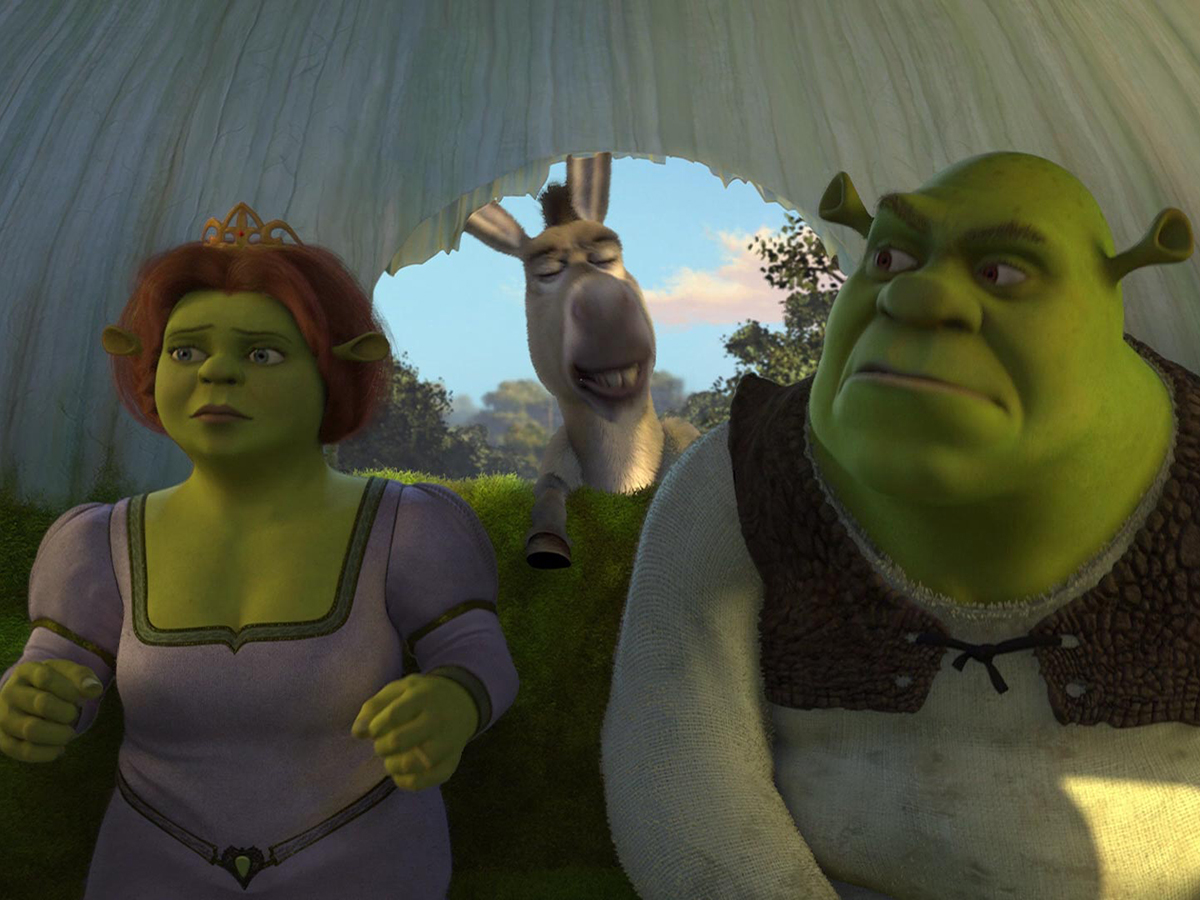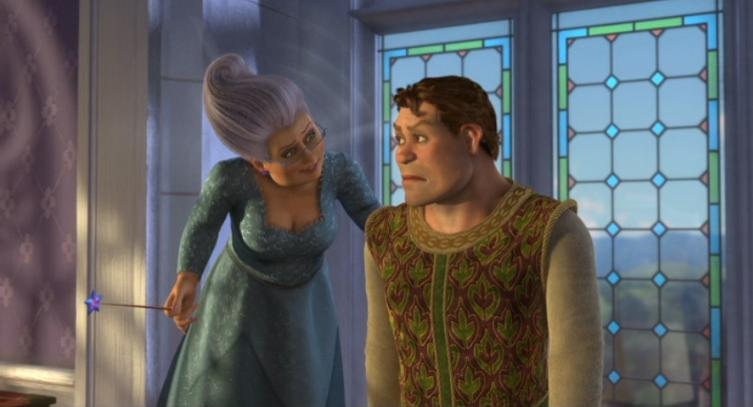Movie Review – Shrek 2 (Mini Review)
Principal Cast : Mike Myers, Cameron Diaz, Eddie Murphy, Julie Andrews, Antonio Banderas, John Cleese, Rupert Everett, Jennifer Saunders, Joan Rivers, Larry King, Aaron Warner, Cody Cameron, Christopher Knights, Simon J Smith, Conrad Vernon, Chris Miller, Mark Moseley.
Synopsis: Shrek and Fiona travel to the Kingdom of Far Far Away, where Fiona’s parents are King and Queen, to celebrate their marriage. When they arrive, they find they are not as welcome as they thought they would be.
********
If the original Shrek is Ridley Scott’s Alien, then Shrek 2 is absolutely James Cameron’s Aliens; the sequel to 2001’s animated blockbuster hit takes ideas tickled with in the original, and gives them wide-eyed, imaginative life in this superior follow-up. Boasting memorable turns by Rupert Everett and Jennifer Saunders as the duplicitous Prince Charming and Fairy Godmother respectively, not to mention a significant uptick in animation style (that still holds up superbly even by today’s standards), the titular Shrek, his sidekick Donkey and girlfriend Princess Fiona are fully ensconced in a full-throated fairytale pastiche that delivers rousing, immediately iconic entertainment. If nothing else, worth a look for it’s climactic action sequence and repurposing of Bonnie Tyler’s “Holding Out For A Hero”, Shrek 2 is a superior sequel that delivers.

There was little doubt that a sequel to Shrek would be greenlit almost immediately the film opened to bananas box office and critical acclaim. A proudly kooky homage and spoof of the Disney fairy-tale movie, Shrek hit a chord with audiences who became infatuated with the giant green ogre (voiced by Mike Myers), his scattergun sidekick Donkey (Eddie Murphy) and beautiful damsel Fiona (Cameron Diaz), and clamoured for more. Shrek 2 is the film that set the benchmark ensemble for the remainder of the franchise, introducing Antonio Banderas’ Puss in Boots, John Cleese and Julie Andrews as Fiona’s royal parents, and Rupert Everett as perennial antagonist Prince Charming, while Saunders’ essaying of the viperous Fairy Godmother is arguably the best of the series. The plot revolves (somewhat inanely) around a reprise and reversal of the original film’s “ugly on the outside, beautiful on the inside” motif for a multitude of characters, notably Charming in particular, and Fiona’s parents less conspicuously, so kids will get a lesson in still not judging a book by its cover, and the fan-favourite ancillary supporting characters – Pinocchio, the three blind mice, the three little pigs, Gingy and the Magic Mirror – all make their returns in hilarious cameos and subplots.

If there is a single weakness to the film’s lustre today it’s that many of its pop-culture references and sight gags have dated – some quite poorly – and this aspect is likely to leave young viewers confused or nonplussed, but for those of us who grew up with the Shrek franchise and can remember all the films, books and cultural segues employed by the film and its funny screenplay, the delight never really fades. Shrek 2 is bigger, faster, edgier and more engaging than the original, and stands as the best the franchise has to offer. A classic, and rightly so.

